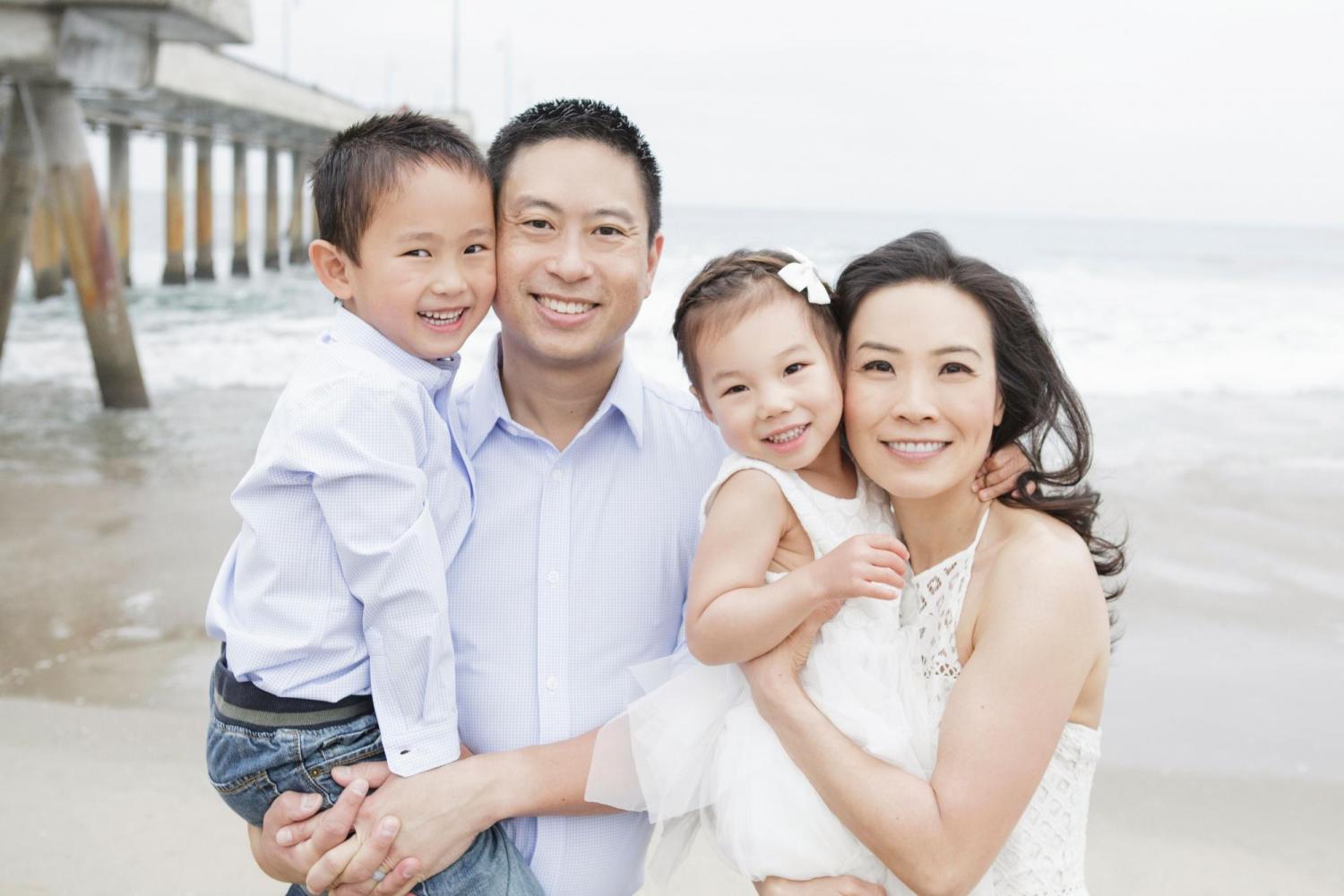
Embracing the Challenge

Edna Ma(EPOBio’99; MD’03) has worked in the Los Angeles area as a private practice anesthesiologist since 2007. The mother of two children also is author of two bilingual children’s books, Travel, Learn and See, featuring English, Mandarin and pinyin and inspired by her son Dean and his best friend Ethan, who met in a Mandarin immersion school.
Have you always been a writer?
No! At CU, I basically lived in the EPO biology building in Dr. Anne Bekoff’s lab. But I like being creative. Writing became that creative outlet.
Are Ethan and Dean fluent in mandarin?
Yes — the real Ethan started learning Mandarin and Spanish when he was two years old. Dean’s first language is Mandarin, which he speaks with his immediate family. Both the boys are enrolled in Mandarin immersion programs in Los Angeles.
What was the moment of inspiration for you to write a bilingual children’s book?
I really wanted to read to my children in Chinese but couldn’t find any books I could read with my limited literacy in Mandarin. Most Chinese children's books are published in Taiwan or China but are entirely in Mandarin. There are very few books written in English, Chinese characters and pinyin. I also observed how easily the children clicked. They naturally gravitated to each other.
I saw writing my own book as a multifaceted solution to my problems. I could write the books parents were looking to buy. I could also improve my own Mandarin literacy and spotlight the beautiful friendships forming at the multilingual school my children attended.
Since you aren’t fluent in Mandarin, how were you able to ensure the Mandarin language was correct?
This has been a challenge! Actually, I took my first Mandarin class as a college freshman at CU. Since then, I make deliberate efforts and I’m not too embarrassed to speak, even in my terrible accent. Some of these efforts include volunteering at my children’s school and watching Netflix in Mandarin.
How did you decide on art for the books?
Growing up, I was drawn toward the watercolor style of the original Winnie the Pooh and Curious George. The illustrator I work with brings back that nostalgic feeling I am hoping to capture and bring to today’s children.
How do you find time to write?
Currently, I write this during the coronavirus pandemic and my children have been home from school for months. On days I am in the operating room, I leave for work at 6 a.m. But on days I’m not administering anesthesia, I wake at 5 a.m. to squeeze in an hour of work before I am on mom duty. The process is slow, but like the quote, “Dripping water hollows out stone, not through force but through persistence,” I’m slowly hollowing out that stone and making a figurative sculpture!
Do your ideas flow easily for you?
Sometimes. The challenging part is honing down the idea into a story. Children have short attention spans, so to tell a story in a compact fashion requires lots of editing and revisions.
Will you continue to write bilingual books?
As long as there is a market for them, I will write. So far the feedback has been great. Because of social media, I have discovered a community of Chinese American authors writing bilingual children’s books. This is reassuring that there is indeed an audience. I also hope my books are discovered by native Chinese speakers wishing to teach their children English.
What does your career as an anesthesiologist mean to you, especially during this pandemic?
Anesthesiologists are at one of the highest risks for contracting the coronavirus doing patient care. This is due to the degree of contact to the airway during patient care, operating the ventilators and ensuring the patients’ vital signs are stable. We are the critical care physicians of the operating room, and are the physicians that safely insert the breathing tube during the few precious minutes you’re not breathing.
Until recently, anesthesiologists were the proverbial wizards behind the curtain and the general public really had little understand of our roles in the operating rooms or ICUs.
You were on bothSurvivor and Shark Tank. What were your key takeaways from those experiences?
The experiences taught me that I had more courage and resilience to overcome things I feared. I wanted to quit Survivor; it was a physically and mentally tough game. Eventually, I was voted off the island. And on Shark Tank, I did not get a deal with the TV investors. I shared my “failures” with millions of people and I survived the process! New challenges no longer seem as intimidating.
What else do you like to do?
I would love to see my books become an animated series. Anyone who has learned a foreign language knows that language is learned by seeing, hearing and experiences. What better way than an animated series.
As for reality TV, I’m up for any challenge! Amazing Race? Do you know anyone I could pair with?
Condensed and edited.
Photos courtesy Edna Ma

